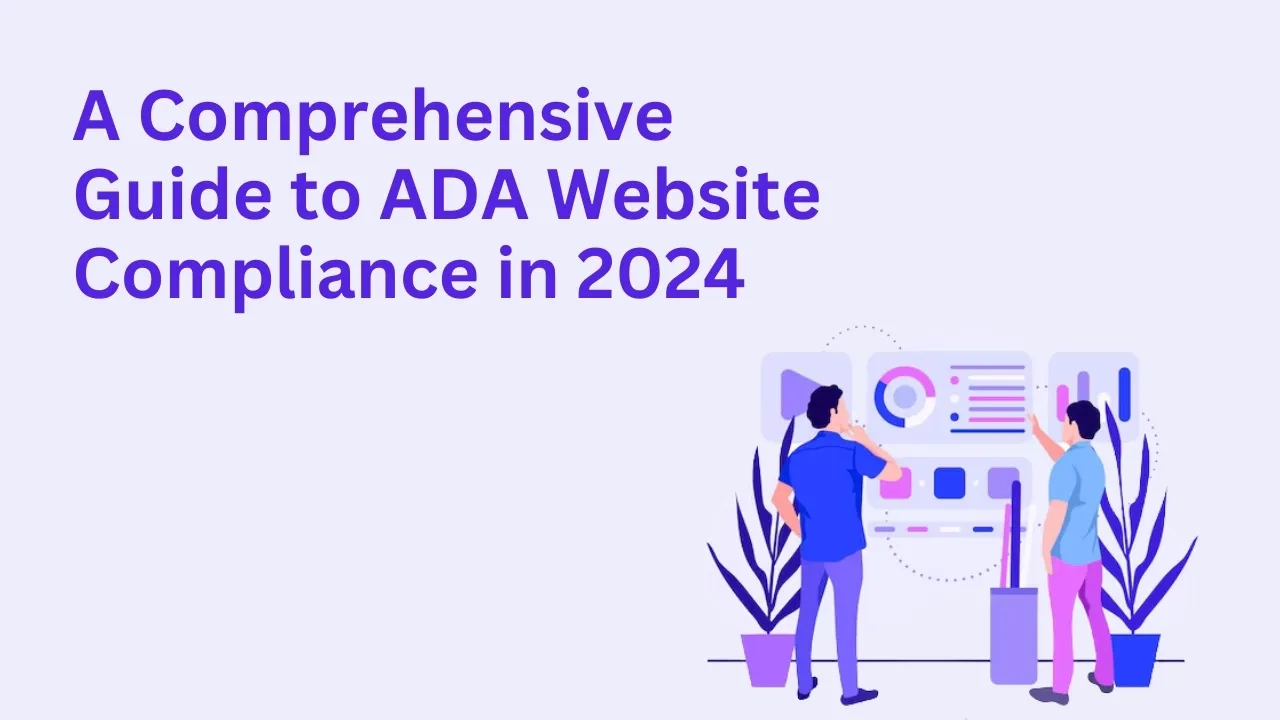A Comprehensive Guide to ADA Website Compliance in 2024

Introduction
The Americans with Disabilities Act (ADA) aims to ensure that individuals with disabilities have equal access to public services and accommodations. As more businesses and organizations shift online, ensuring ADA compliance for websites has become crucial. This guide will help you understand the key aspects of ADA website compliance for 2024.
Understanding ADA Compliance
ADA compliance for websites means designing and maintaining your site in a way that ensures it is accessible to people with disabilities. This involves adhering to web accessibility standards and guidelines. The Web Content Accessibility Guidelines (WCAG) 2.1, published by the World Wide Web Consortium (W3C), are the primary guidelines used for ensuring web accessibility.
Key Areas of ADA Compliance
- Perceivable: Ensure that all content is presented in a way that can be perceived by all users. This includes providing text alternatives for non-text content, captions for videos, and ensuring that content can be resized without assistive technology.
- Operable: Make sure that all website functionality is operable through a keyboard or other assistive technologies. This also includes ensuring that users have enough time to read and interact with content, and that content is navigable using various input methods.
- Understandable: Content should be easy to understand, with clear and simple language. User interface elements should be predictable and consistent to minimize confusion.
- Robust: Ensure that your website is compatible with current and future technologies, including assistive technologies. This means following best practices for coding and using standard HTML and CSS.
Common Accessibility Issues
- Lack of alternative text for images.
- Inaccessible navigation, such as menus and forms.
- Improper use of color contrast and font size.
- Missing or poorly implemented captions for videos.
- Inconsistent or non-standard layout and navigation patterns.
Steps to Achieve ADA Compliance
- Audit Your Website: Perform a comprehensive accessibility audit to identify existing issues. Tools like WAVE or Lighthouse can help with this process.
- Implement WCAG Guidelines: Address the issues identified in your audit by following the WCAG 2.1 guidelines to ensure compliance.
- Test with Real Users: Conduct usability testing with individuals who have disabilities to gain insights into the real-world accessibility of your site.
- Ongoing Maintenance: Regularly update and maintain your website to ensure continued compliance and address any new accessibility issues that arise.
- Seek Expert Help: If needed, consult with accessibility experts or hire professionals to ensure that your site meets all necessary requirements.
Conclusion
ADA website compliance is not just a legal obligation but also a commitment to inclusivity and accessibility. By following the guidelines and best practices outlined in this guide, you can create a website that is accessible to all users, regardless of their abilities. Regular updates and audits will help ensure that your site remains compliant and user-friendly.








